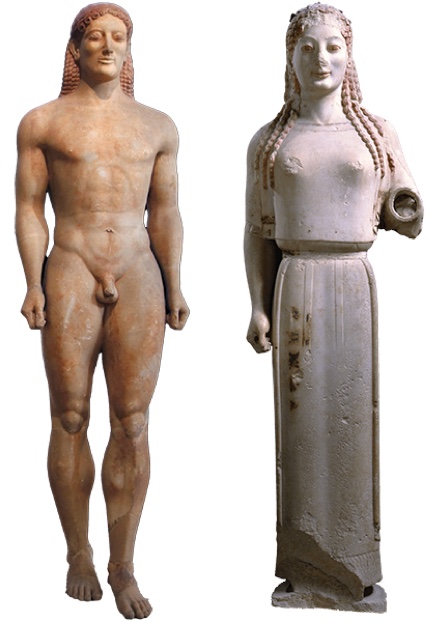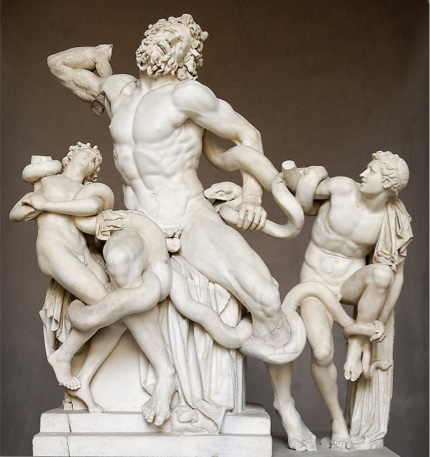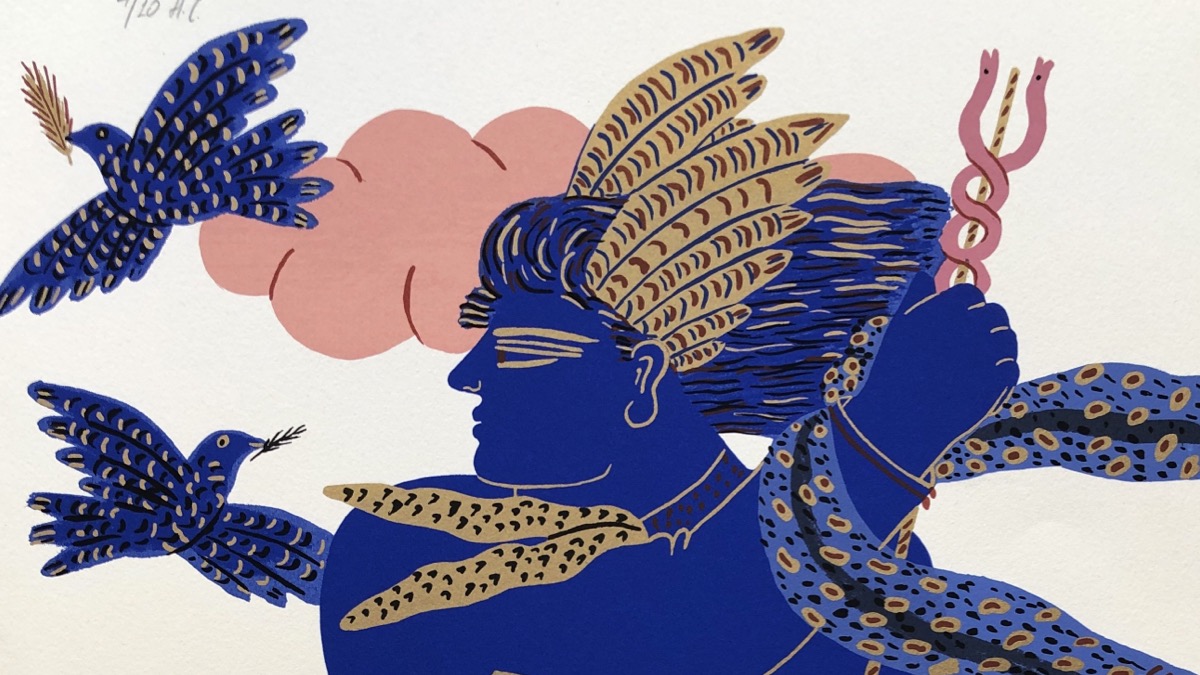
Decoding the Key Movements in Ancient Greek Art
Ancient Greek art is often thought of as one artistic movement, mainly made up of vases, architecture and sculpture. While the latter is true, the art of ancient Greece consists of far more than one homogenous style or movement. In fact, it spans various different periods, each with its own trends and styles. With Artsper, explore the main movements you should know!
1. Geometric

The art movement in Greece during the period from around 900 to 700 BC is called Geometric Art. This period took place at the end of the Greek Dark Ages, which was sparked by the catastrophic collapse of the Mycenaean civilization. During this period, pottery was decorated in red and black styles with decorative shapes and images of animals and humans. Craftsmen created these images mainly using geometric shapes, giving the movement the name we know it by today.
Vases during this period were often used as funerary vases to hold ashes or be used as grave markers. They were also used as drinking vessels at symposiums, the social gatherings that took place after banquets. Depending on the vase’s use, it would depict different imagery on its surface. Funerary vases, for example, would depict funerary scenes, while vases created for symposiums depicted scenes of performance and entertainment.
Narrative played an important role in the Geometric art of ancient Greece. The scenes depicted tell stories to be interpreted by the viewer, requiring a combination of historical, societal and mythological context to understand. They can be understood as illustrations of Greek mythology and literature.
2. Archaic

Archaic Art is the name given to the movement of Greek art created between around 700 to 480 BC. At the beginning of this period, Greek art was influenced by civilizations in the Near East, particularly between 735 and 650 BC. This period is known as the Orientalizing Phase. During the Archaic period, depictions of humans became increasingly realistic, and stone sculptures were popularized.
An example of this is the Archaic period’s kuoros (male) and kore (female) statues. These statues were made from limestone and depicted young men and women. These statues are typically symmetrical in form and often have one foot placed slightly forward. Although usually life-sized, some early examples measure up to 3 meters tall. While it was initially believed that kuoros and kore were only used to represent the god Apollo, it has since been discovered that they had other uses. These sculptures were also used as commemorative tombstones of the deceased, as trophies for victors in the games, and as offerings to the gods.
In addition to sculpture, the Archaic period also saw a flourishing of decorated pottery carried on from the Geometric period. Vases in the red and black style were extremely popular. They often depicted humans and animals and decorated with complex geometric patterns.
3. Classical

During the Classical period in ancient Greece, from 480 to 323 BC, Athens rose to prominence in Greece politically, culturally and economically following the defeat of the Persians. Pericles, an Athenian statesman, transformed the Acropolis of Athens into a monument for the city’s newfound status and power. The temple he built, the now-iconic Parthenon, reflects the architectural and artistic grandeur that is still associated with ancient Greece today. It was constructed from marble and decorated lavishly with sculpture, and housed a 12-meter tall gold and ivory statue of Athena designed by the sculptor Phidias. The temple itself is 70 meters long and 30 meters wide, and originally was surrounded by columns. Unfortunately, however, the Parthenon has faced severe damage throughout the centuries. The center of the temple was destroyed by explosives and its remaining artifacts were sold off to the British Museum by Thomas Bruce between 1801 and 1803.
The Classical period of ancient Greek art is widely regarded as one of the most exquisite in the history of the world. Sculptures of the period demonstrate freedom of movement and expression, depicting their subjects in a more naturalistic manner to that of previous periods. Rather than emphasizing the symmetrical, their forms were depicted as flowing and dynamic, creating the illusion that they were moving through space.
4. Hellenistic

The Hellenistic period of ancient Greek art refers to the period from 323 to 31 BC. Following the death of Alexander the Great in 323 BC, the king of Macedonia during the Classical period, the Macedonian empire began to crumble.The term “Hellenistic” refers to the expansion and dissemination of Greek ideas during this period (The “Hellenizing” of the world). After Greece’s defeat to the Romans during this period, Hellenistic artistic trends continued to heavily influence Greco-Roman art.
The Hellenistic period was one of prosperity and lavishness for the upper classes. While vase-painting decreased in popularity, the art forms of sculpture, architecture and painting flourished. Greek sculptures had become so technically skilled that their sculptures became flawlessly beautiful and heroic, exemplified in the Hellenistic work Laocoön and his sons from c. 200 BC. Far from the symmetrical and static poses of the Archaic period, these figures are dynamic, brimming with life and emotion.
Another famous example of Hellenistic Greek sculpture is The Winged Victory of Samothrace, created in the early 2nd century BC and rediscovered in the 19th century. This sculpture is housed in the Louvre, taking its place at the top of the monumental Daru staircase.

The legacy of ancient art
In conclusion, Ancient Greek art spans diverse historical periods and styles, each bearing its influence on the history of art that followed. Discover our selection of the best contemporary works inspired by the diversity of ancient Greek art!

About Artsper
Founded in 2013, Artsper is an online marketplace for contemporary art. Partnering with 1,800 professional art galleries around the world, it makes discovering and acquiring art accessible to all.
Learn more













